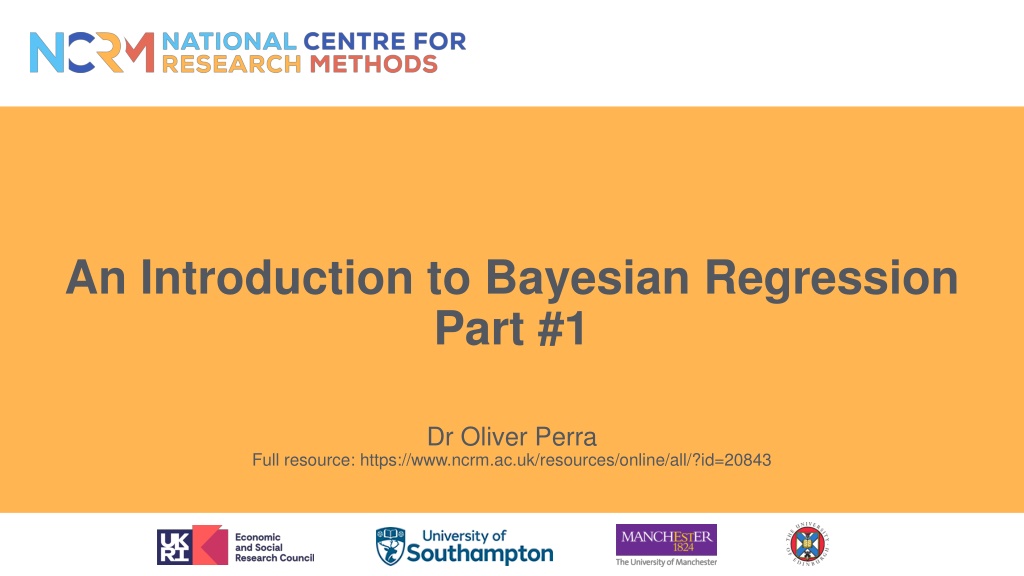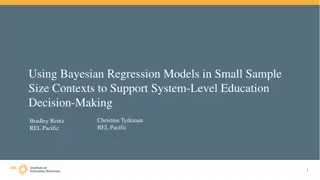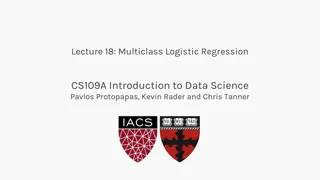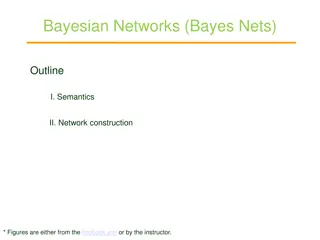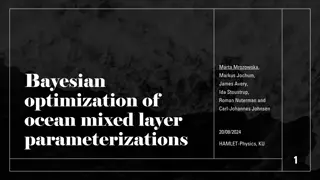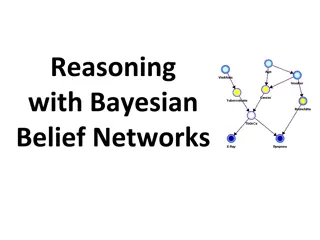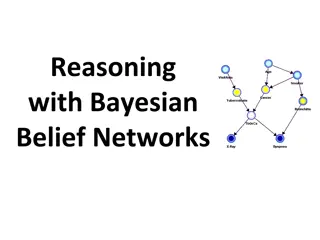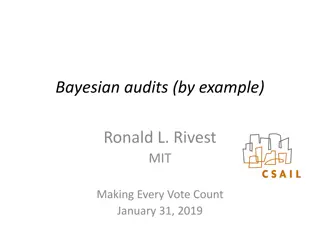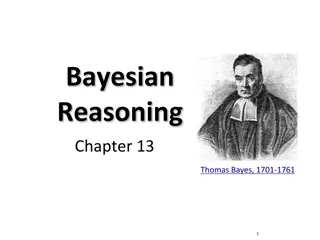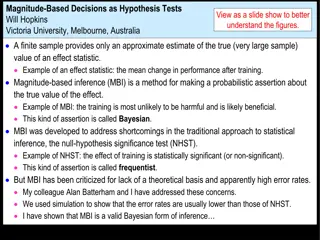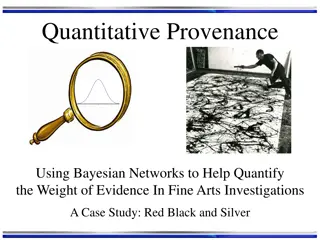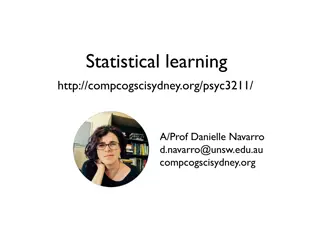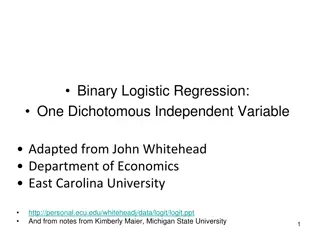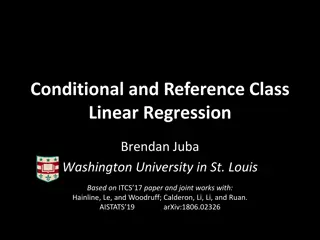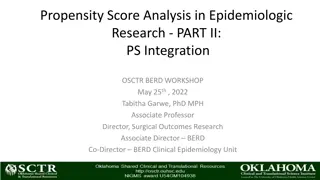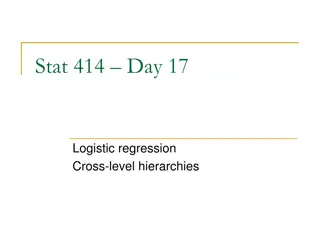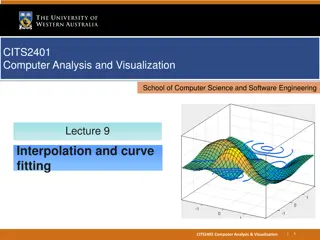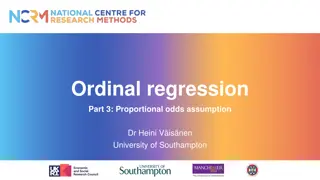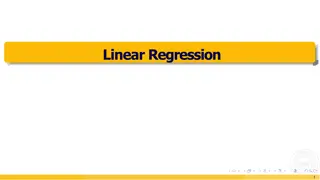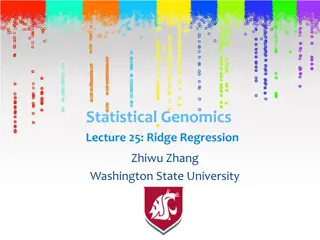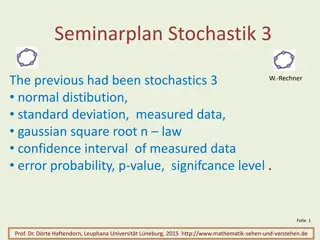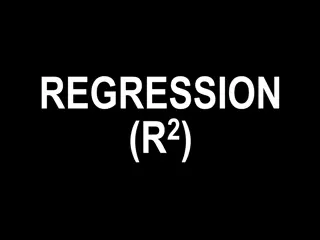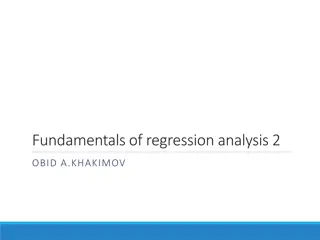Understanding Bayesian Regression and Its Advantages
Bayesian regression offers a unique approach to hypothesis testing by incorporating prior knowledge and updating beliefs with new evidence. Contrasting with frequentist methods, Bayesian analysis considers parameters as uncertain and describes them using probability distributions. This methodology allows for a more comprehensive interpretation of data, emphasizing the posterior distribution to summarize parameter values and uncertainty.
Download Presentation

Please find below an Image/Link to download the presentation.
The content on the website is provided AS IS for your information and personal use only. It may not be sold, licensed, or shared on other websites without obtaining consent from the author. Download presentation by click this link. If you encounter any issues during the download, it is possible that the publisher has removed the file from their server.
E N D
Presentation Transcript
An Introduction to Bayesian Regression Part #1 Dr Oliver Perra Full resource: https://www.ncrm.ac.uk/resources/online/all/?id=20843
Summary Bayes vs. Frequentist approach Advantages of a bayes approach
Bayesian approach A different view of hypothesis testing from traditional approach: Allows to include previous knowledge on the phenomena Incorporates every piece of new information (however small) to update our knowledge in light of new evidence.
Conventional Methods (Frequentist) Parameters (e.g.: population mean) are unknown but fixed. A counter-factual approach: o Null hypothesis o Estimate probability of observed difference occurring from null hypothesis if we replicated the experiment several times.
Bayesian Analysis Parameters are uncertain: o Described by probability distributions. A-priori assumptions about the distribution of a parameter are updated considering new data: o Estimate posterior distributionsthattake into account new information. o Sample from posterior distribution to summarise parameter plausible values and their uncertainty.
Bayesian analysis First element: A prior Prior DATA: R=3 N=5 R/N = 0.60 p = proportion who will vote Red H = number of respondents who indicate Red preference N = total number of respondents
Bayesian analysis Second element: Likelihood function. Prior My prior assumption DATA: R=3 N=5 R/N = 0.60 Likelihood func.: R ~ Binomial (N, p) p = proportion who will vote for Red candidate R = number of respondents who intend to vote for Red N = total number of respondents
Bayesian analysis Bayesian Rule Posterior Posterior Prior DATA: R=3 N=5 R/N = 0.60 Likelihood func.: R ~ Binomial (N, p) Posterior: Pr(p | R, B) = ?? ?,? ? ??(?) ??( ?,?) p = proportion who will vote for Red candidate R = number of respondents who intend to vote for Red N = total number of respondents
Bayesian analysis New Data: R=29 N=50 R/N = 0.58 Prior Posterior Likelihood func.: R ~ Binomial (N, p) Pr(p | R, B) = ?? ?,? ? ??(?) ??( ?,?) p = proportion who will vote for Red candidate R = number of respondents who intend to vote for Red N = total number of respondents
Sampling to summarise Posterior p = proportion who will vote for Red candidate R = number of respondents who intend to vote for Red N = total number of respondents 90% of prob. of Red between 49.40% and 66.26%
Bayesian Analysis Bayesian analysis takes a question in the form of a model and uses logic to produce an answer in the form of probability distributions (McElreath, 2018: Page 10)
